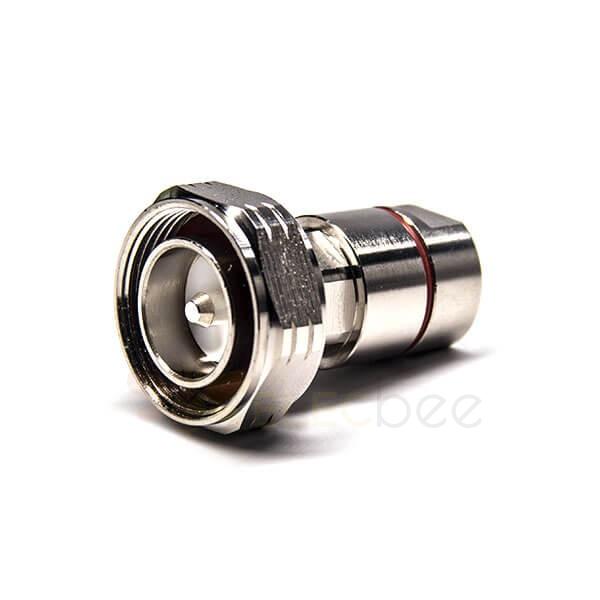In the realm of telecommunications, the term "7/16 DIN connector" might not be familiar to everyone. Yet, this versatile and robust connector is an essential component in many high-power and low-loss radio-frequency (RF) systems. In this article, we'll delve into the specifics of the 7/16 DIN connector, exploring its features, applications, and benefits. Additionally, we'll provide guidance on how to choose the right connector for your needs.
Understanding 7/16 DIN Connectors: A Brief Overview
The 7/16 DIN connector, also known as the Dinse connector, is a threaded RF coaxial connector developed in Germany. The name "7/16" refers to the connector's dimensions, with an outer diameter of 7mm and an inner diameter of 16mm. DIN stands for "Deutsches Institut für Normung," the German Institute for Standardization, which created the connector's specifications.
Designed for use in high-power and low-loss systems, 7/16 DIN connectors are utilized in various industries, including telecommunications, military communications, and broadcast applications. The connector's robust design, mechanical stability, and excellent electrical performance make it a popular choice for these demanding environments.

Key Features of 7/16 DIN Connectors
1. Low VSWR and Low PIM
VSWR (Voltage Standing Wave Ratio) is a measure of how efficiently a connector can transmit radio-frequency signals. A low VSWR value indicates a better impedance match between the connector and the transmission line, resulting in less signal reflection and better overall performance.
PIM (Passive Intermodulation) is another vital parameter in RF systems. It measures the unwanted signal distortion caused by non-linearities in passive components like connectors. A low PIM value indicates less distortion and, therefore, a cleaner signal.
7/16 DIN connectors are designed to provide both low VSWR and low PIM, making them ideal for high-performance RF systems.
2. Rugged Construction
The 7/16 DIN connector is renowned for its durability and mechanical stability. Its threaded coupling mechanism ensures a secure connection, even in harsh environments where vibration and mechanical stress are common. This feature makes it a popular choice for outdoor and industrial applications.
3. High Power Handling Capability
These connectors can handle high power levels due to their large contact areas and low contact resistance. This ability allows them to support high-power transmission lines and antennas, making them suitable for various applications in telecommunications, military, and broadcasting.
Applications of 7/16 DIN Connectors
1. Cellular Networks
In mobile communication systems, 7/16 DIN connectors are often used to connect base station antennas, transmission lines, and other radio frequency components. Their low VSWR and PIM, combined with their high power handling capability, make them ideal for this application.
2. Broadcast Industries
Television and radio broadcasters rely on 7/16 DIN connectors to connect antennas, transmitters, and other RF equipment. Their rugged construction and reliable performance contribute to the overall quality and reliability of broadcast signals.
3. Military Communications
In military communication systems, reliability and durability are of the utmost importance. The 7/16 DIN connector's robust design, secure coupling mechanism, and excellent electrical performance make it an excellent choice for these demanding applications.
Choosing the Right 7/16 DIN Connector
When selecting a 7/16 DIN connector, consider the following factors:
- Frequency range: Ensure the connector can support the frequency range of your system.
- Power handling: Verify that the connector can handle the power levels your application requires.
- Cable compatibility: Check that the connector is compatible with the type and size of the cable you plan to use.
- Environmental factors: Consider factors like temperature, humidity, and mechanical stress to choose a connector that can withstand your application's specific environment.
By keeping these factors in mind, you can select the best 7/16 DIN connector for your needs.
In Conclusion
The 7/16 DIN connector is a versatile and reliable component in high-power and low-loss RF systems. Its low VSWR, low PIM, rugged construction, and high power handling capability make it suitable for a wide range of applications, from cellular networks to military communications. By understanding its features and considering the factors mentioned above, you can select the right connector to ensure optimal performance in your specific application.

